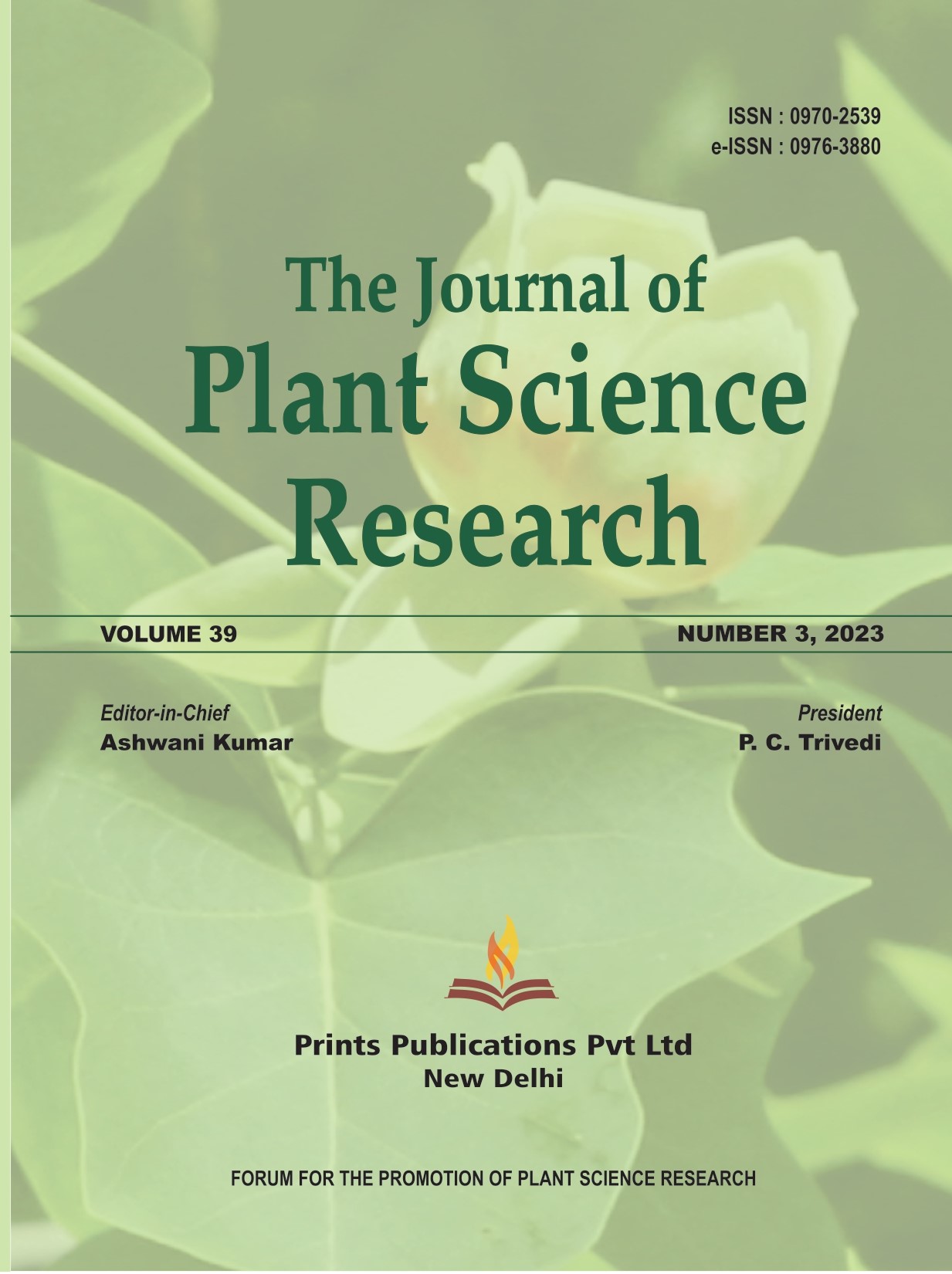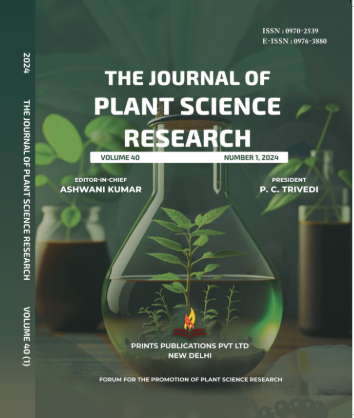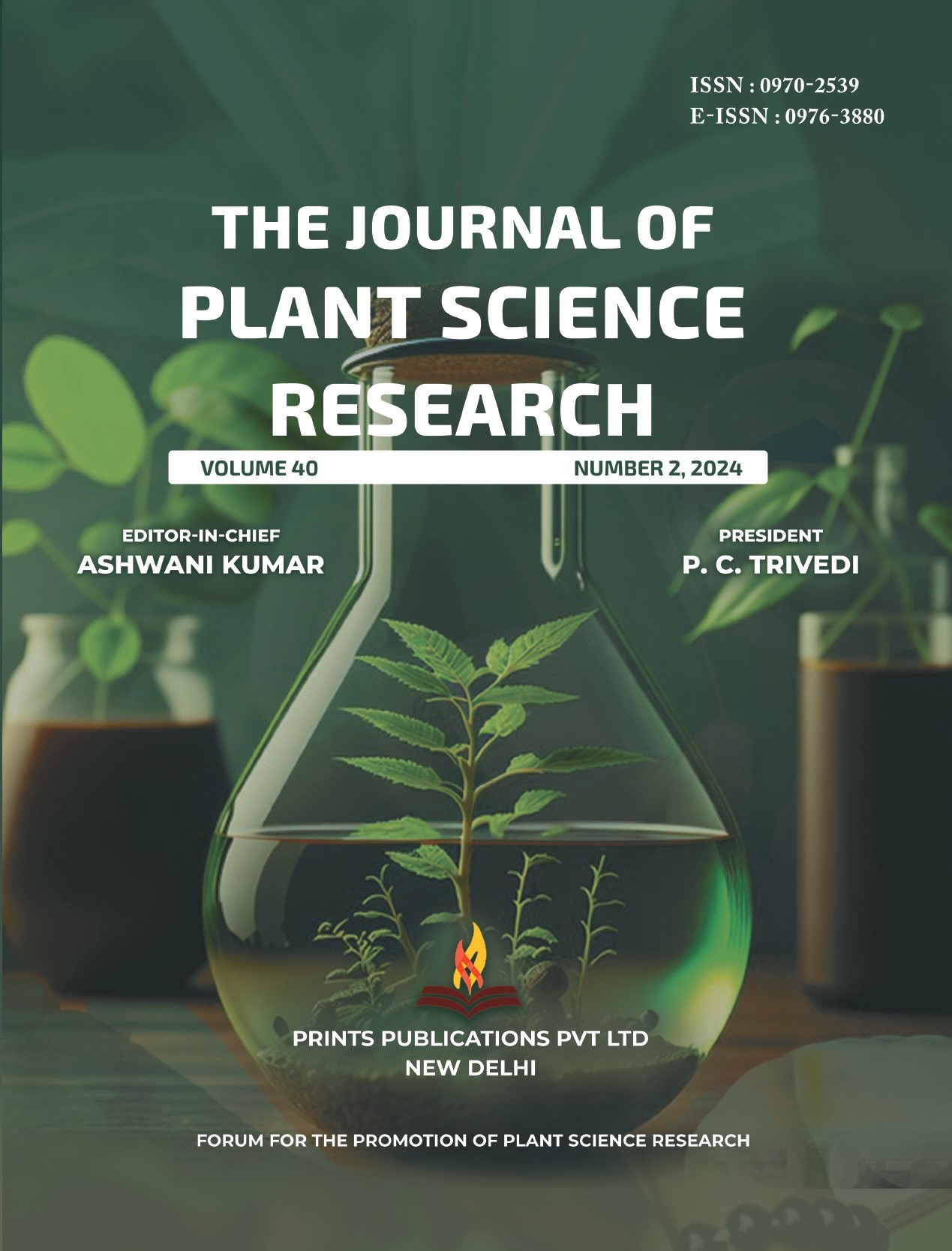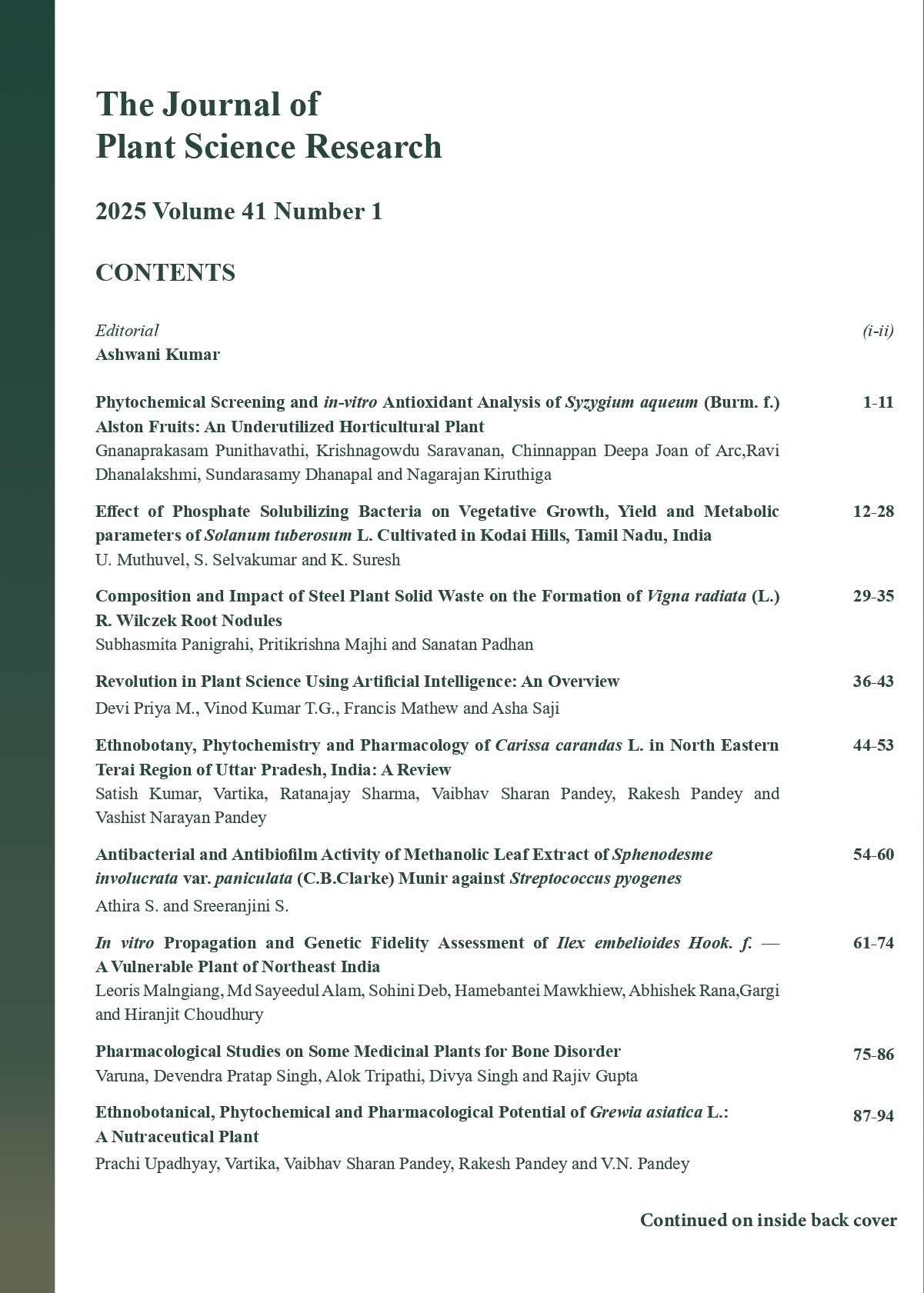The Journal of Plant Science Research - A UGC Care-Listed Journal
Published in Association with Forum For the Promotion of Plant Science Research
Current Volume: 41 (2025 )
ISSN: 0970-2539
e-ISSN: 0976-3880
Periodicity: Tri-annual
Month(s) of Publication: April, August & December
Subject: Botany
DOI: 10.32381/JPSR
Online Access is Free for Life Member
Methyl Jasmonate: A Potent Player in Salinity Stress
By : A. Hemantaranjan, Shivani Lalotra, Rekha Sodani
Page No: 219-224
Abstract
Salinity stress an atrocious stress customary in various parts of India and across world is one of the major reasons for subordinating the yield of several crops. It leads to oxidative stress and nutrient unavailability which poses serious threats to soil fertility and soil structure. The excessive amount of soluble salts in soils is major cause of desertification in various countries. Current agriculture scenario and the climatic conditions are expected to worsen abiotic factors globally and ultimately curbing the yield potential of various crops. Therefore, certain biotechnological or plant physiological strategies or tools needed to be supplement for target crops to specific environments. Such tools are the exploitation of phytohormones in agriculture sectors. Among these, Methyljasmonate is an important phytohormones used incessantly in improving the yield per unit area of crops known to alleviate various stresses and to improve the quality and quantity of crops by activating the antioxidant machinery in plants and up- regulating the stress related genes. These oxylipins plays vigorous role in growth and development, senescence, flower nectar secretion, G-protein signaling, in plants. Besides its remarkable role in biotic stresses like salinity, drought, temperature extremes it has also foremost role in activation of defensive secondary metabolites in biotic stresses like pathogen attack.
Authors :
A. Hemantaranjan, Shivani Lalotra and Rekha Sodan
Department of Plant Physiology, Institute of Agricultural Sciences, Banaras Hindu University, Varanasi, India, 221005.
DOI: https://doi.org/10.32381/JPSR.2021.37.02.1






